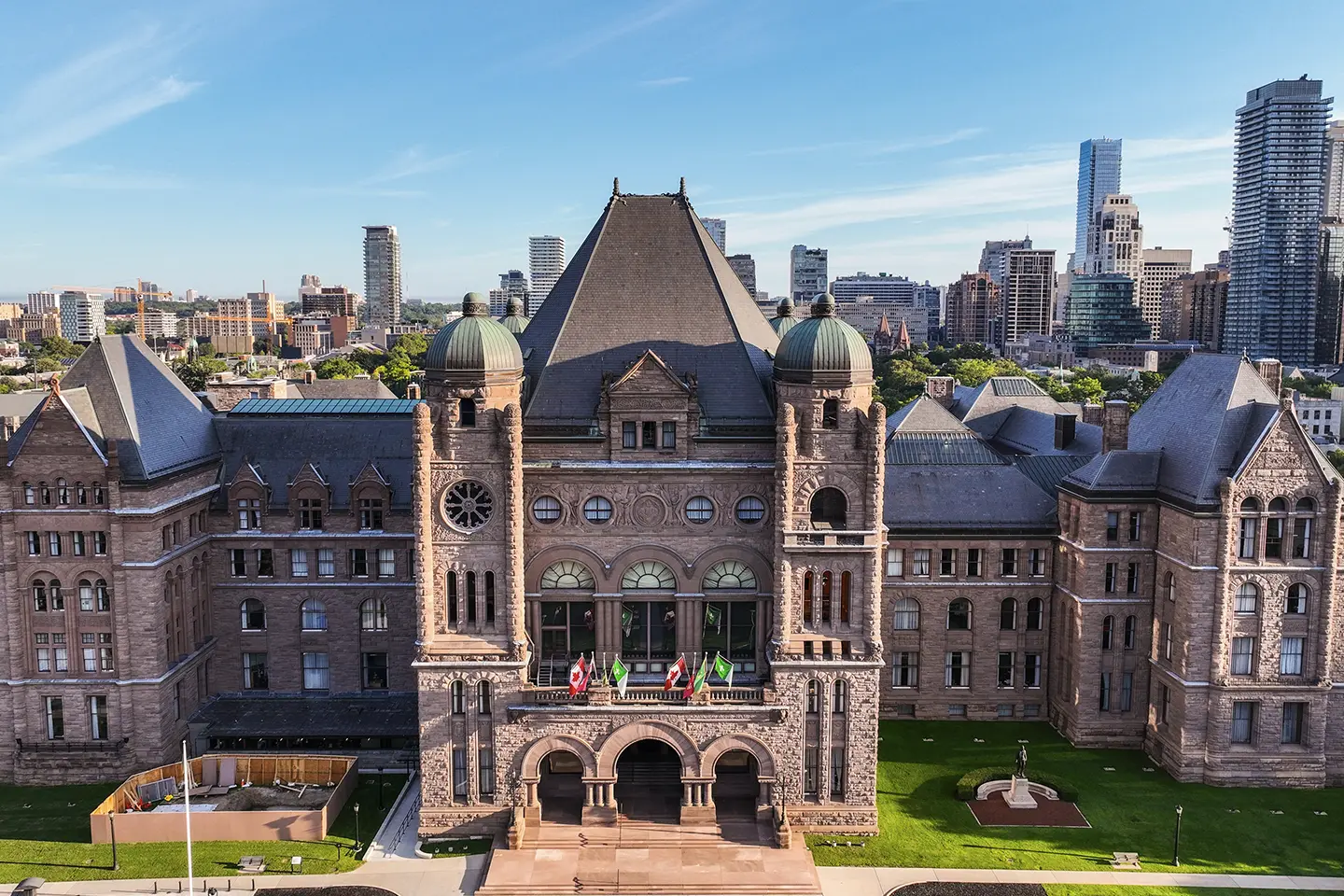How Recreational Cannabis Will Impact Medical Programs

With the legalization of recreational cannabis coming into effect on October 17, 2018, many are asking, what is the point of maintaining a separate medicinal cannabis model? After all, provincially licensed retail stores in theory will be permitted to sell a breadth of cannabis product strains and compounds for recreational use, some of which may have medicinal benefits. We would argue that a separate system for medicinal cannabis should exist, but just not in its current form. Instead, a system should exist that allows the provinces to enable community pharmacists to dispense cannabis for medical purposes to their patients to ensure safety, access and a high quality of care.
The new model for the legalization of recreational cannabis in Canada will largely follow a straightforward division of responsibility between the federal government and the provinces. The federal government will be responsible for the supply such as licensing maintaining quality of suppliers, and setting minimum standards for health and safety, minimum age requirements and maximum possession limits, while the provinces will be responsible for its distribution and sale.
The division between regulation of supply and regulation of distribution is consistent with the current approach to pharmaceutical drugs. The federal government approves the drug for sale and sets certain minimum standards, while the provinces generally regulate how they are dispensed and by whom, with some exceptions around narcotics. Any provincial health minister will likely tell you that decisions around prescribing and dispensing powers assigned to physicians, pharmacists, nurse practitioners, and others is one of the trickiest parts of the job.
It goes against this pattern for the federal government to be exclusively involved in both the supply and dispensing of cannabis for medical purposes even under the new Cannabis regulations coming into effect on October 17. The current system under the Access to Cannabis for Medical Purposes Regulations (ACMPR) of allowing a Licensed Producer in Canada to sell cannabis online for medical purposes will be maintained with very few additional benefits to the patient.
In fairness, the federal system was thrust upon them through the culmination of various court rulings since 2001 on the rights of patients with medical need to possess and access cannabis. A good summary can be found here. Under different circumstances, one could imagine the federal government would have preferred not to have been involved in the dispensing side of cannabis for medical purposes in the first place.
The clinical evidence to support its use has grown since the early 2000’s when cannabis first became available to Canadians who were prescribed it by their health care practitioner. In addition, certain cannabis strains that have been shown to alleviate pain can also be an excellent substitute for opioids. As the clinical pharmacology professor Dr. Juurlink, from the University of Toronto recently put it “why is it OK for me to prescribe something like OxyContin for chronic pain, but not OK to prescribe an oral cannabinoid?” he says. “Yes, cannabis has harms, but they don’t hold a candle to those of opioids, especially the way they’ve been prescribed for the past 20 years.”
Yet, pharmacists in the community who are part of the patient’s circle of care, who can provide advice and counselling to patients and can protect against the potential harmful interactions with their existing medications continue to be shut out. When it comes to obtaining cannabis for medical purposes, the only human interaction for patients is with their postal worker rather than from their pharmacist.
Unless that is, provinces who “oversee the distribution and sale of cannabis, subject to minimum federal conditions” and who “could also tailor certain rules in their own jurisdictions”, use their powers to allow pharmacists to dispense cannabis for medical purposes.
In theory, after October 17, 2018 provinces will have the authority to enable the sale of any cannabis product or oil that a physician prescribes. As evidence comes in about the medicinal benefits of cannabis, it often points to the dosage or the percentage of its active ingredient. (i.e., “cannabis with X% of Cannabidiol (CBD) is shown to assist with this ailment… products with Y% of Tetrahydrocannabinol (THC) assists with that ailment) and the province is free to sell any of the hundreds of combinations and concentrations of the hundreds of ingredients that could possibly be grown in, or derived from, a Cannabis plant.
There are a few reasons why there should be a separate system, including one that includes community pharmacists:
The first reason relates to how patients incorporate cannabis that has medicinal benefits into their health care plans. If a physician feels based on the available evidence that their patient would benefit from a cannabis product for a medical condition being treated under their care, then many would argue the health care system has a responsibility to ensure the care is being delivered safely and effectively. In the case of cannabis, the risk of harmful interactions with their existing medication is not low and the right combination and quantity of cannabis is also important. A trained pharmacist is uniquely positioned to provide clinical advice and oversight to their patient, likely much more so than an untrained cashier at a private retail store or a customer service representative in the call centre of a Licensed Producer.
The second reason is access. Under the current federal cannabis for medical purposes model, Licensed Producers may sell any strain they grow online directly to registered users. If this pathway did not exist, patients in the recreational model would need to rely on the strains that are stocked in physical retail outlets. Even with Ontario’s new plans to license an unlimited number of private retail stores in the recreational cannabis marketplace, the availability of cannabis products, including those with medicinal value will be dependent on agreements in place between the Licensed Producer and the Ontario Cannabis Store and their subsequent purchase of the wholesale product by those retail stores.
As with any physical store, there will be limited shelf space in new recreational cannabis retail outlets. Many of the products that have medicinal benefits do not produce a psychoactive effect, such as those with a high concentration of CBD- the compound commonly associated with medicinal effects, and therefore may not generate enough consumer demand to warrant taking up valuable space. It remains to be seen if private retail stores will stock low THC/high CBD products for the 124,000 Ontarians who currently require it for medicinal purposes. If they were permitted to dispense, the thousands of accessible pharmacies across the country would readily stock the various strains with medicinal value, since they would only dispense to patients with a prescription from their health care practitioner.
The third reason is private health insurance reimbursement for cannabis is limited to medical purposes. Certain private health insurance plans are reimbursing patients with a registration certificate from Health Canada or a licensed producer under the ACMPR for medical cannabis. The certificate serves as a mode of authentication. Under a provincial model, the pharmacy would serve as an obvious gatekeeper for private insurance claims due to their current relationships. They are likely already connected to private health insurers meaning they would not only authenticate the prescription but could also potentially process the claims directly.
There are two relatively minor drawbacks between the current federal medical model and a model that would exist provincially in pharmacies: possession limit and age restrictions. Possession limits for cannabis are higher under the federal Cannabis for Medical Purposes system. Provinces are limited in that they may only allow the sale of up to 30 grams of dried cannabis at any one time, while those who are registered under the federal medical model can possess and purchase 5 times as much or up to 150 grams. Also, patients under the age of 18 are able to access cannabis under the federal medical cannabis system, while this is strictly prohibited under any provincial distribution model. This would mean for those under 18 or those who need a larger quantity, they would need to continue to obtain cannabis under the federal system. A study showed that CBD reduces the number of seizures for children with certain forms of epilepsy, highlighting the need to keep this part of the federal system in place.
Some might argue that cannabis is not a real drug – it is not approved by Health Canada and does not have a Drug Identification Number (DIN). There are certainly mechanisms in place under the new federal regulations of the Cannabis Act to gain this approval. Health Canada would take the time to determine if the specific drug product had enough evidence to back up its claims and would be able to provide the cannabis product with a DIN. Once Health Canada has approved, pharmacists under the Cannabis Act will have the authority to dispense the cannabis product as a “drug”. There is no question about this. Indeed, we understand that some companies are planning on taking their product through this process.
From a pharmaceutical perspective however, the incentives to invest in this cumbersome process remains unappealing. While specialized strains may be able to sustain a higher price point in the marketplace, combinations of the various strains and active ingredients derived from the cannabis plant are not patentable, making any drug created vulnerable to copying by a company who can then potentially sell it recreationally as long as they do not make a claim about its clinical benefits.
In the end, there are merits in keeping a separate system in place for patients who require Cannabis for Medical Purposes, however the system would serve patients better if provinces properly incorporated cannabis for medical purposes into the very health care systems they oversee. Because patients should get their medication advice from their pharmacist not from their postal worker or from an untrained cashier in a retail store.


